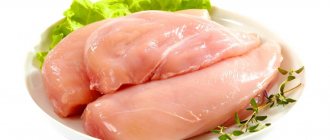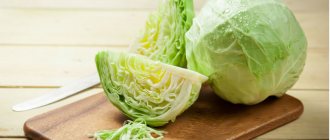The benefits and harms of a fasting day on kefir and buckwheat
Buckwheat is a nourishing, but at the same time dietary product. By eating it, you will feel full for a long time.
Important! Before unloading, prepare your body. The day before, do not eat junk or heavy food, at least for dinner.
Cereals contain a huge amount of vitamins and minerals:
- B vitamins;
- copper;
- iron;
- phosphorus;
- iodine;
- alimentary fiber.
Buckwheat porridge removes toxins well and improves the functioning of internal organs. As for kefir, this is a product that will help you lose excess weight. It contains bacteria beneficial to the intestines, proteins, vitamins A, C, H, fatty acids, calcium, potassium, iodine, etc.
These two products complement each other very well. The main advantage of kefir and buckwheat is that after eating these products you will not want to eat more. Thanks to such a fasting day, you can get rid of swelling, toxins, improve the functioning of the gastrointestinal tract, and also lose up to 1 kg in one day.
Find out how to properly cook buckwheat for weight loss.
Of course, a calorie deficit for unprepared people can be a real challenge and even harm the body, so before you go hungry for a little while, consider some nuances:
- At first, it’s hard to get used to such days—headaches and irritation are possible.
- If you have serious gastrointestinal problems, consult your doctor.
- On fasting days, it is better to avoid physical activity.
- Be sure to check if you are allergic to buckwheat or kefir.
Recipe for cooking porridge for weight loss
Only the right cooking method allows you to get the maximum benefit from cereals. It is recommended to avoid cooking, as it deprives buckwheat of most of its nutrients. Prepare porridge according to one of the following recipes:
- Half a kilogram of buckwheat is poured with one and a half liters of boiling water (steep) in a saucepan. The dishes are covered with a lid and wrapped in a blanket or towel. Infuse the dish overnight and eat it the next day.
- A glass of cereal is poured into a thermos. Pour 2 cups of boiling water. It is tightly closed and left to infuse for at least 30 minutes. If it is prepared in the evening, then you can leave it overnight.
Due to the fact that cereal goes well with vegetables, meat, mushrooms and other products, buckwheat dishes during the diet are very varied and numerous. Below are some popular dietary recipes for preparing this cereal, including daily meals and buckwheat diet recipes for weight loss.
Buckwheat soup
Required ingredients:
- purified water – 2 l;
- egg grains – 100 g;
- carrots – 100 g;
- chicken egg – 1 pc.;
- potatoes - 300 g;
- dill leaves – 15 g;
- onion – 70 g;
- vegetable oil – 1 tbsp. l.;
- salt – maximum 5 g.
We invite you to familiarize yourself with Better weight loss according to Semenov
Carefully sort and rinse the grain. Cut the carrots into slices and the potatoes into medium cubes. Finely chop the onion and finely chop the greens.
Place pre-chopped onions, carrots and clean cereals into boiling salted water (if you are following a diet, you do not need to add salt). After about 5 minutes, add the potato cubes and simmer until the soup is done. After this, pour vegetable oil and a slightly beaten egg into it in a thin stream. Sprinkle the dish with chopped herbs, let the water boil again, cover the pan with a lid and turn off the heat.
Buckwheat porridge with vegetables
- purified water – 600 ml;
- egg grains – 300 g;
- carrots – 100 g;
- medium zucchini – 1 piece;
- onion – 100 g;
- salt – maximum 10 g (you can do without it).
Carefully sort and rinse the grain. Peel and cut the zucchini into small cubes, grate the carrots on a large-mesh grater, finely chop the onion and fry all the vegetables in a non-stick frying pan (without oil).
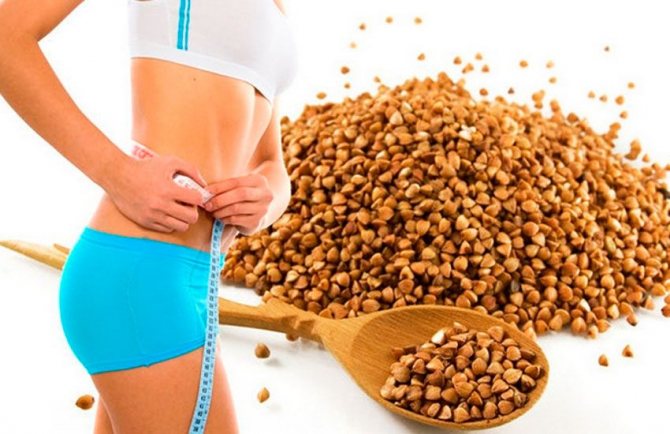
Place buckwheat, onions and carrots, buckwheat, zucchini and buckwheat again in a saucepan. Pour boiled water over all the ingredients, place the pan over low heat and cover it with a lid. After the water boils, cook the porridge for approximately 15-20 minutes. It is better to serve and eat the dish after half an hour, when the cereal is completely infused.
Buckwheat cutlets
- egg grains – 175 g;
- chicken or turkey fillet – 500 g;
- chicken egg – 2 pcs.;
- champignons – 180 g;
- onion – 70 g;
- oatmeal – 50 g;
- greens - to taste;
- salt – minimal amount.
First of all, you should prepare dietary minced meat, for which you need to grind the poultry fillet in a blender, boil or steam the grain and finely chop the onions and mushrooms. Mix all these ingredients thoroughly with the addition of eggs and salt (if necessary). Pour oatmeal into the prepared minced meat, mix thoroughly again, form cutlets and fry them in a non-stick frying pan (without oil).
Buckwheat pancakes
- purified water – 30 ml;
- buckwheat flour – 30 g;
- chicken egg – 1 pc.;
- low-fat cottage cheese – 125 g.
Beat the egg and water thoroughly. Add cottage cheese and buckwheat flour to the resulting mixture and mix thoroughly. Fry the pancakes on both sides in a non-stick frying pan (without oil).
Buckwheat cabbage rolls
- purified water – 500 ml;
- egg grains – 200 g;
- carrots – 2 pcs.;
- greens – 1 bunch;
- onions – 2 pcs.;
- large cabbage leaves - as needed;
- vegetable oil – minimal amount.
Boil or steam the grain. Finely chop the onion, grate the carrots on a large-mesh grater and fry them in a small amount of vegetable oil. Boil the cabbage leaves a little in boiling water or place in the microwave for 5 minutes (until softened).
Mix the prepared cereal with half the fried vegetables. Place this mixture in portions on cabbage leaves and roll them into envelopes. Place the cabbage rolls into a saucepan, sprinkling them with the other half of the fried vegetables and chopped herbs. Fill the cabbage rolls with water along their top edge and simmer for approximately 10-12 minutes under the lid.
How to choose buckwheat for a fasting day
In order for unloading to have the most positive effect, it is best to use green buckwheat, since it is not amenable to heat treatment and all useful components are preserved in it. Other types are slightly inferior in nutritional value, but will also provide noticeable results.
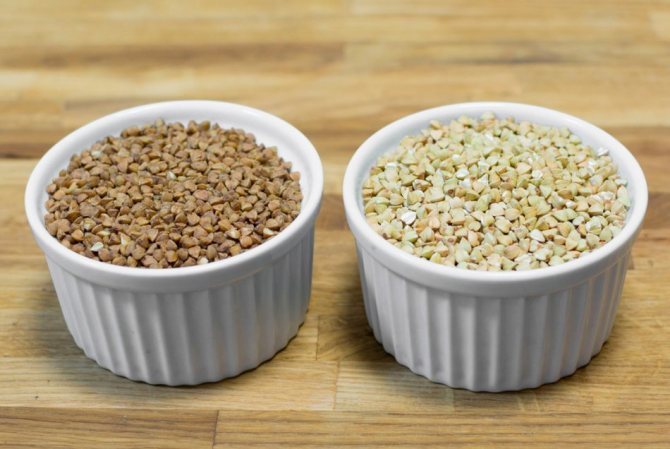
Before purchasing a product, check it for freshness. If, when you open the package, the cereal smells like sweetness, you should not eat it. It is better to take the highest grade buckwheat - it has the least amount of impurities.
How to properly spend a fasting day on buckwheat and kefir
Unloading on kefir and buckwheat porridge should be done no more than once a week. Kefir should be non-fat, preferably 1%. You can drink up to 2 liters of the drink throughout the day. It is necessary to cook buckwheat correctly. To do this, pour two glasses of boiling water over a glass of cereal and leave it overnight, covered.
Did you know? Scientists have proven that eating buckwheat porridge improves brain function and improves mood.
In the morning, the porridge should be divided into several parts and can be consumed without adding oil or salt. also pour kefir over the cereal and leave for 8 hours. During the day you need to drink enough water, about 1.5 liters - this will speed up the elimination of harmful substances. You can drink herbal teas without sugar.
Menu for one day
Pour 250 g of buckwheat into two glasses of kefir and leave overnight. The next day, divide the porridge into 5 servings. An hour before breakfast, drink a glass of water. After this, consume buckwheat every 2 hours, drinking a glass of water or tea an hour before meals. If you feel hungry, you can eat an apple.
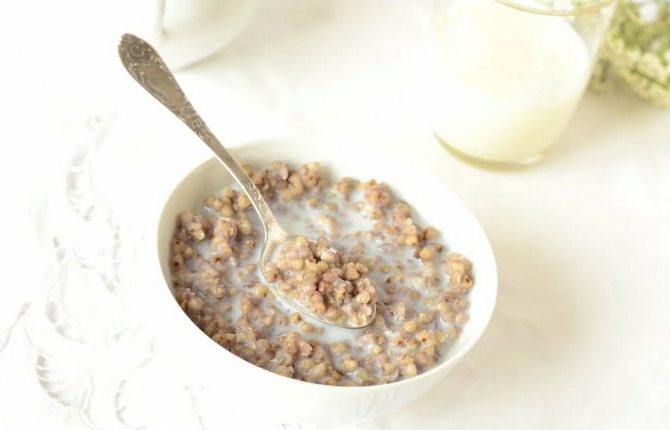
How to properly prepare buckwheat with kefir
Rinse the cereal well and remove any debris. Next, pour a glass of buckwheat with three glasses of kefir. Leave the porridge to swell overnight . It is best to refrigerate so that the taste is not specific. The next day, the finished dish can be consumed.
Rules for following the buckwheat diet
Not everyone can stick to the buckwheat diet. Such nutrition is contraindicated:
- people suffering from diabetes;
- during pregnancy and lactation;
- for renal and heart failure, gastrointestinal pathologies, hypotension and hypertension.
Those who train intensively or are engaged in work involving increased physical activity should not follow a mono-diet.
Diet Basics
To get the maximum benefit, you should consider several important nuances:
- eat only foods allowed by the diet;
- drink enough water (clean and still);
- exit the diet correctly.
In addition, you need to not only eat buckwheat, but also know how to properly prepare this grain as part of a low-calorie diet.
The mono food system has a meager, limited menu. Some variations allow the consumption of some foods, but such food does not have a variety of choices.
The complete ban applies to sweet, salty and starchy foods. This shocks many people and gives them the false feeling that they will have to starve. This opinion is unfair for the buckwheat diet. Cereals are perfectly filling, and the introduction of acceptable foods allows you to diversify your diet.
The list of foods that should not be eaten can take quite a long time. It is much easier to immediately identify what can be included in the mono-diet in question.
Eligible Products
The monotony of the buckwheat diet can certainly get boring. Therefore, even when eating according to the mono system, the following products may be present in the diet, making it easier to tolerate the same type of diet:
- still clean water;
- kefir with a fat content of no more than 1%;
- yogurt without any additives in the form of sweeteners or fillers;
- apples, but not in all diet options.
It should be remembered that absolutely any diet sharply limits the amount of substances involved in vital processes carried out in the body. In order not to provoke vitamin deficiency, it is recommended to take multivitamin complexes. This allows us to minimize any possible harm to health, since it is impossible to accurately predict how a mono-diet will affect an individual, because the characteristics of each person’s body are individual.
What can you drink?
This question interests everyone who decides to adhere to a buckwheat diet. If you do not keep the strictest option, you can drink both green and herbal tea and coffee. However, it is recommended to drink these drinks one cup a day, that is, choosing between coffee or tea each time. The use of sweeteners is prohibited. No honey or sugar. In addition, you should remember the diuretic properties of liquids.
Sauces, seasonings, sugar, sweeteners (artificial and natural), salt are prohibited. These flavor enhancers increase the nutritional value of porridge and make you feel fuller much faster. Eating bland food, on the contrary, suppresses the feeling of hunger and allows you to reduce the amount of food you eat.
It is acceptable to include in the diet menu, but only for some options. In the classic variation, you can eat vegetables only when you go off the diet. Eating some fruits and vegetables every day is possible only in a light format. Not everything can be used.
Acceptable are broccoli, tomatoes, spinach, cucumbers, cauliflower. It is not recommended to consume cabbage cabbage. It negatively affects digestion, causing bloating, and also increases hunger. It is not recommended to eat starchy vegetables, which include corn, potatoes, carrots, beets, and so on.
Buckwheat consumption is entirely determined by which diet option you decide to follow. A strict regimen that involves consuming only cereals and water does not impose any restrictions. When other products are allowed into the diet, the quantity is determined by the additional ingredients.
The lighter version involves consuming cereals ranging from 150 to 250 g per day. This amount applies not to ready-made buckwheat, but to dry buckwheat. It is quite enough to satisfy the feeling of hunger. It is recommended to divide this volume into four doses. If the feeling of fullness passes, you can have a snack with natural yogurt or low-fat kefir.
The basic rule of a fasting day on buckwheat is that the calorie intake before the event should gradually decrease, and the next day after it gradually increase - this way the body will not experience a sharp drop. The diet on a fasting day will consist of buckwheat and water; you can also diversify the menu with green tea. Some supplement the diet with kefir, fruits, vegetables, everything in order.
How best to prepare buckwheat for a fasting day is up to the person losing weight. Some prepare it in the usual way - boil it, others, including nutritionists, insist that buckwheat should be poured with boiling water and left covered in a warm place all night. Why is this method considered more optimal? It’s not a matter of ease of preparation; when buckwheat is steamed, it retains more beneficial vitamins and minerals than when cooked.
Nutritionists advise dividing meals into five to six times during a fasting day. You need to eat every two and a half hours. It is very important to drink at least 2.5 liters of water per day during the fasting diet - this ensures reliable removal of accumulated waste and toxins. The main amount of liquid is taken before 15:00 in the afternoon to avoid swelling.
Physical activity is undesirable in this case - a fasting day should be arranged not only for the stomach, but also for the whole body. On this day you should visit the sauna or take a bath. A relaxing massage or other spa treatments would be a good idea. This will also ensure that excess fluid and harmful substances are removed.
Rapid weight loss during a fasting day on buckwheat is not a myth. But in order to achieve a positive result, you need to know the rules for carrying out a fasting day. Fewer deviations from nutritionist recommendations will ultimately amazingly transform your appearance and improve your intestinal function.
- For a fasting day, both the traditional brown variety of buckwheat is suitable (moreover, you need to choose a grain that is lighter in color - it has been fried less, which means it retains more useful substances in the composition), and green - it has even more benefits, but it has a specific taste , which may not appeal to everyone.
- The most suitable way to prepare the main dish for a fasting day is steaming. Boiled buckwheat is also useful, and a fasting day is also practiced on it, but the effectiveness is much lower.
- During a fasting day, buckwheat can be supplemented with other products, although their variability is limited by nutritionists to dairy products, apples and vegetables.
- Before you start a fasting day, you need to prepare your body - reduce the consumption of junk food (fried, fatty, smoked, sweet, baked goods) for a couple of days and gradually reduce the amount of food consumed (subject to large portions).
- Throughout the fasting day you need to drink clean water without gas. Its total volume should be at least 1.5 liters.
- The last meal is no later than 19 pm.
- Compliance with a fasting day also implies the absence of contraindications when consuming buckwheat. You should definitely familiarize yourself with them before starting the diet.
- Buckwheat fasting day is one of the few varieties acceptable during pregnancy, but in this case there are a number of features that must be taken into account.
We invite you to familiarize yourself with the Diet for stomach and duodenal ulcers during an exacerbation: list of products, menu
The essence of the buckwheat fasting day method
A fasting day on buckwheat involves eating only one grain (300–350 g), prepared accordingly. The porridge does not contain salt, sugar or other additives. The total volume is divided into 5-6 equal portions and spread over the course of a day. From liquids you can drink: clean water, mineral water without gas, herbal infusions and green teas, freshly squeezed juices from unsweetened fruits.
If it is difficult to do without salt, then you can add small quantities to the porridge: kelp (seaweed), soy sauce, onions fried in oil.
Rules for holding a fasting day:
- 1-2 days before unloading, they switch to light food - exclude flour, sweets and fatty foods from the diet.
- The night before, do a cleansing enema or drink herbal tea with a laxative effect.
- Drink about two liters of liquid per day. Completely avoid sweet soda, coffee and store-bought juices, as they increase thirst and stimulate appetite.
- An interval of 2–3 hours is maintained between main meals; water is drunk an hour after meals and when thirst occurs. When severe hunger occurs, eat a green apple, dried fruit or any vegetable. There should not be more than three such inclusions per day, unless the menu suggests this.
- The last time you eat is 2-3 hours before bedtime, after which you can only drink.
Beginners usually find it difficult to unload with buckwheat alone, so they are recommended to choose some kind of combined option. They provide additional products.
Complete unloading smoothly. In the morning, drink a glass of water on an empty stomach and eat stewed vegetables and a spoonful of boiled rice for breakfast. After this, try to refrain from any snacks for 3-4 hours. Porridge, fruits and vegetables help switch the body to its usual diet. It is advisable to avoid meat, fish, eggs and legumes.
How to cook buckwheat for a fasting day
The best option for a fasting day is green buckwheat, as it is not subjected to heat treatment and retains a maximum of nutrients in its composition.
The grains are poured with cold water for 2–3 hours, then drained and left warm and without light overnight. By morning they manage to germinate. The mass is consumed in this form. Other varieties of buckwheat are also suitable for fasting, although they are slightly inferior in nutritional value. The porridge is not boiled, but prepared as follows:
- Buckwheat is washed in running water.
- Pour into a thermos or other hermetically sealed container in the amount of one glass.
- Pour in hot water (400–450 ml).
Leave to infuse for 8–9 hours. It is recommended to do this in the evening, and the dish will be ready for breakfast. It is unacceptable to salt, sugar or add butter or sauces.
How often can you do a fasting day?
Fasting days with a reduction in calories can be carried out no more than once a week. You should not reduce your caloric intake below 500 kcal, since fasting is a huge stress. If you deload frequently, the body, on the contrary, will begin to accumulate fats in order to protect itself from starvation, which can lead to metabolic disorders.
Important! You should not unload if you are not feeling well. If you feel weakness, drowsiness, discomfort, headache or any other pain, it is better to refrain from fasting.
results
If you regularly arrange kefir and buckwheat days, you can easily get rid of excess weight. And also do not recruit it in the future. During one unloading you can lose up to 1 kg, which will not return.
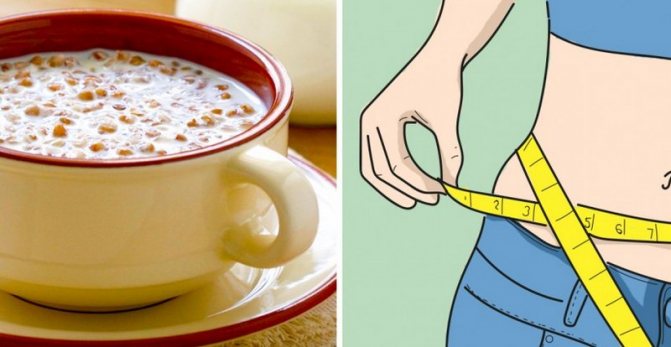
Thanks to cleansing the intestines, all useful components from foods are absorbed much faster and better. Getting rid of waste and toxins has a positive effect on the general condition of the body and eliminates skin defects.
Reviews and personal experience
How effective a fasting day on buckwheat and kefir is is helped by reviews from people who have already tried the diet on themselves:
Anastasia, 26 years old
“I gained excess weight after giving birth - it was very difficult to get back to normal, since no hunger strikes helped - my body simply became foreign. I decided not to torment him with strict restrictions; I arranged such a deload once a week. The rest of the time I ate normally, although I tried not to eat after 6 pm. The result did not surprise me, but pleased me: in 2 months I managed to lose 7 kg - and this with almost no effort.”
Vera, 34 years old
“Laziness doesn’t allow me to go on diets - I always manage to break loose and gain additional weight. I tried the kefir-buckwheat fasting day - I liked it. I don't feel hungry, everything is fine. I managed to lose 1 kg in a day.”
Inga, 21 years old
“The main disadvantage of this diet is the lack of salt and any additives. It’s hard for me to give up spices; the taste of porridge is not so pleasant. But I am pleased with its effectiveness - the mass goes away. I found the best solution for myself - I eat porridge with fruit, sometimes I can afford eggs and walnuts.”
Fasting days on buckwheat and kefir are the optimal solution for people who want to lose excess weight without much effort. There is no need to endure painful hunger and spend a long time on tedious diets. This option is also good as a preventative measure if you want to achieve a great mood and excellent well-being.
Contraindications
Despite the enormous benefits of buckwheat and kefir, such a diet can be harmful to the body.
- There are a number of contraindications, which include:
- nursing mothers - since many useful substances are transferred to the baby with milk, their supply needs to be replenished. That is, regularly consume healthy foods in sufficient quantities;
- people with gastrointestinal diseases - such diseases require a balanced diet, and fasting can only aggravate the situation;
- individual food intolerance;
- poor health - fasting days should be spent in absolute comfort, so if you feel even a little unwell, it is better to postpone fasting.
Did you know? Buckwheat is a good remedy for insomnia; it is buckwheat husks that are used to fill pillows to improve the quality of sleep.
Unloading your body is a great way to cleanse yourself and improve your health. The main thing is to follow all the rules and pay attention to contraindications, then fasting will not harm you, but will give you a feeling of lightness and noticeable weight loss.

